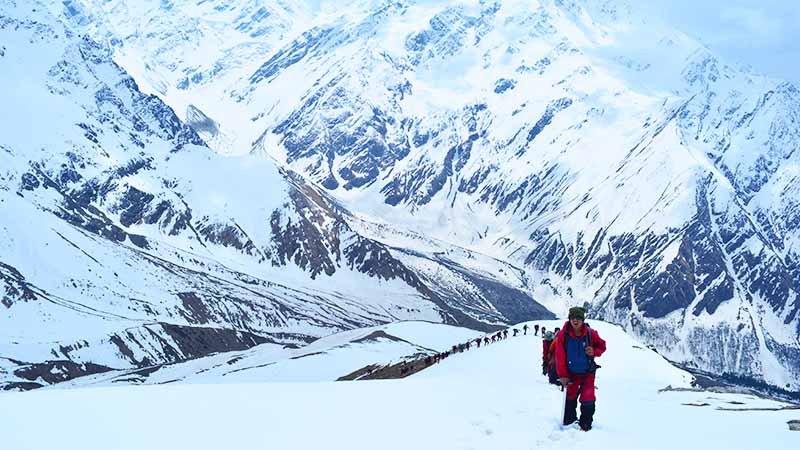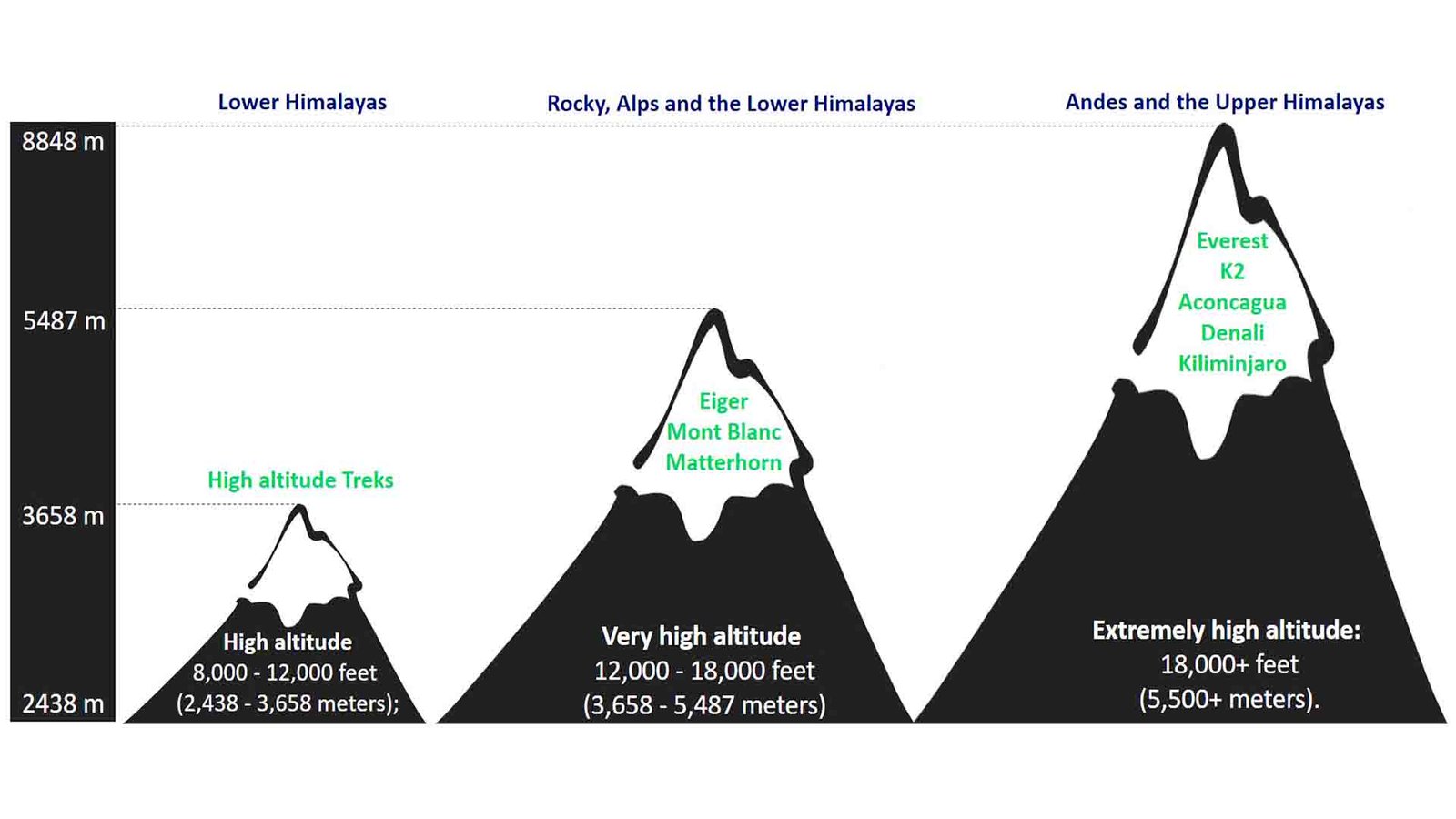
What is Acute Mountain Sickness(AMS)?
Acute Mountain Sickness or AMS is a problem related to high altitudes. As we move higher the partial pressure of air decreases which decreases the saturation of oxygen in the body. This lack of oxygen leads to dizziness, nausea, headaches and shortness of breath. These are also the symptoms for AMS. A prolonged stay at a higher altitude with existing symptoms may make the condition worse and it even gets fatal at times. Adventurers, Mountaineers and Skiers who often travel to high altitudes may develop this sickness. It can also occur at a lower altitude in people with cardiopulmonary diseases.
You must be wondering what is considered as a high altitude. Basically any altitude above 2440 m above sea level is considered high altitude. Further classification of altitude can be seen as:
- High altitude: 8,000 – 12,000 feet (2,438 – 3,658 meters);
- Very high altitude: 12,000 – 18,000 feet (3,658 – 5,487 meters); and
- Extremely high altitude: 18,000+ feet (5,500+ meters).

What are the types of Acute Mountain Sickness(AMS)?
1. Mild Acute Mountain Sickness: It is the mildest form and is very common.
- Symptoms: Dizziness, nausea, headache and shortness of breath.
- Treatment: Reduce Activity Level, hydrating with water, Resting at least for a day before gaining altitude, return to lower altitude if condition doesn’t improve
2. High Altitude Pulmonary Edema(HAPE): It is when fluids start building up inside the lungs. This is severe and is fatal if not treated timely.
- Symptoms: Extreme shortness of breathe, difficulty in breathing, Coughing with fluid discharge, Difficulty in walking, Blue tinged lips.
- Treatment: In a remote area for mountaineers evacuation, Rapid Descent with Supplemental Oxygen is essential, a20mg slow-release nifedipine taken every six hours can be helpful. Acetazolamide or Diamox is also common medicine used for HAPE. In case of tourist having HAPE at areas like the alps where medical attention can be given, descent to the nearest medical facility is advised.
3. High Altitude Cerebral Edema(HACE): It is when fluids start building up inside the brain. This is also life threatening and fatal.
- Symptoms: Declining level of conciousness, Decline in Mental Function, Hallucination, impaired coordination, slurred speech
- Treatment: Similar to HAPE, rapid descent and supplemental oxygen is primary. Acetazolamide(Diamox) and Dexamethasone are the medicines which should be given to the patient
Note: HAPE and HACE are considered as a medical emergency which demands immediate care. The patient has to be rescued and evacuated as soon as possible and taken to a lower altitude where medical attention can be given to him/her.
Who is prone to get Acute Mountain Sickness(AMS)?
Anyone can get AMS, be it an experienced trekker/mountaineer or a beginner. It is just about following the right acclimatization schedule and taking care of few basic things like a gradual ascend, hydrating yourself etc. Age, Sex or general health doesn’t make much of difference. However, people with lung and heart diseases should avoid going to higher altitudes especially if it is trekking/mountaineering. People who live at very low altitudes and are not used to high altitude show a comparatively higher risk.
How to Prevent Altitude Mountain Sickness(AMS)?
Mountaineering and Adventure sports are all about rules. You miss one and you can land yourself in trouble. Same is with ascending, the only basic rule is to ascend gradually and let your body acclimatize naturally. There are acclimatization schedules for every expedition. In general to be safe after every 8000 ft of climb only 2000 ft should be ascended in a period of 2 days. You may ascend higher and come back to a lower altitude for rest at night but camping at an altitude over 2000 ft without a break/ rest is not permissible Now as we go higher the number of days for acclimatization increases and the permissible altitude gain decreases. Few basic things to follow for a safe ascend are:
- Ascend Gradually (Not more than 2000 ft in 2 days)
- Maintain a decent pace don’t over exert yourself. If you are trekking it is not a race so stay at your natural pace. Slow and steady wins the race.
- Go prepared. Start physical exercise at least a month before your trek. In case of expedition much stringent preparation is needed.
- Keep your self hydrated. Drink water regularly and in intervals.
- Avoid alcohol, cigarettes and sleeping pills. They can make your condition worse and make you more prone to get AMS
- Share What you are going through, if you are a beginner or experienced trekker/mountaineer never hesitate to share with your partners what you are going through. Sometimes a mild head ache can turn ugly in a very short span of time. Don’t let your condition get worse,
